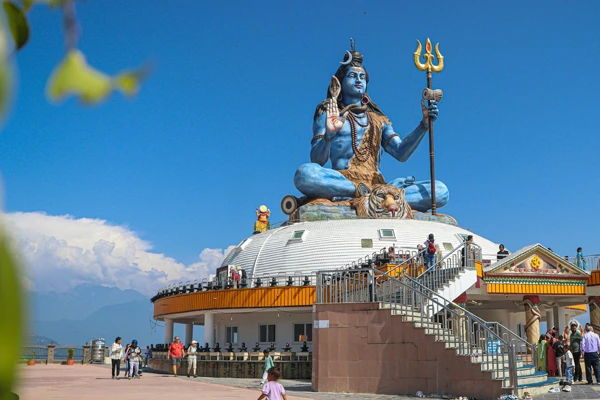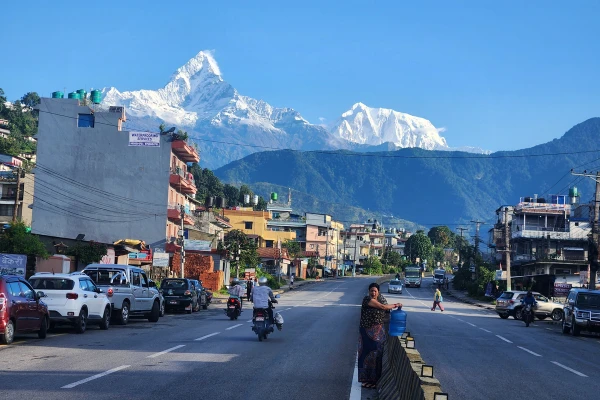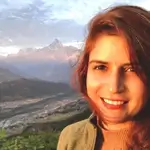Long ago, lying among the massive peaks, Kathmandu was not the hustling city that you see today but a massive lake. As per the legend, there lived a divine named Manjushree who was known for his compassion and wisdom. On his journey to the Himalayas, he witnessed a mystical flower on a lake. He got captivated by the beauty of the Lotus flower. On reaching to the flower, he realized the potential of the place for human settlement. He cut a gorge at Chobar with his sword draining the water. This is how Kathmandu was formed. The flower then became Swayambhunath. Manjushree had long hair with lots of lice which later turned to monkeys.
Kathmandu, Kasthamandap, Kantipur... the city of temples, the historical city, the city where every nook and cranny tells a story. It’s the city where I was born and raised, the city that lives in my heart, and the city I am eager to introduce to you from my perspective. Thank you for visiting my blog Top 10 Places to Visit in Kathmandu. Here, I share how Kathmandu has changed in recent years, how it became so crowded, and what it has to offer to its visitors explaning the Major Attractions in Kathmandu, The Capital City of Nepal.
In the span of 20 years, the city changed dramatically. We once had enough playgrounds and Kathmandu was not the concrete jungle as it is today. As Kathmandu was originally a lake, the soil was extremely productive. In the recent years, the political instability and the search of better opportunities attracted people to the capital where they found better services than back home in the villages. People came and never returned. With owning a house in Kathmandu as a symbol of success, everyone is tempted to own a piece of land and build a house. This resulted in addition of one house after another, turning the city to a concrete jungle. Yet, despite this transformation, being surrounded by the green hills still gives Kathmandu a stunning charm.
Additionally, I must mention that the Young Dynamic Mayor we have in Kathmandu, Mr. Balendra Shah (Balen) is trying to change the face of the city. You might find the city a bit dusty with all the constructions going on but that will end soon enough.
Kathmandu boasts a unique beauty that reflects the charm of Nepal, offering visitors a glimpse into the rich cultural heritage of the country. In my blog, let me share the Top 10 Places to Visit in Kathmandu which make the city quite special.
Swayambhunath Stupa- Top Places to Visit in Kathmandu

Swayambhunath Stupa is one of the popular landmarks in Kathmandu, situated on a hill and also renowned as The Monkey Temple due to the monkeys that inhabit the area. Built during the Lichhavi period, the stupa traces back to over 2500 years. It has remained as a sacred site for both Hindus and Buddhists symbolizing peace and enlightenment. The dome shape of the stupa represents the entire world. The eyes on the four sides represent wisdom and compassion. The 13 pinnacles represent the stages one has to go through to attain enlightenment. Between the eyes lies a curly symbol also representing Number 1 in Nepali signifying unity in all the things existing in the world.
There are multiple entrances to the stupa. From the eastern side lies a long stone staircase with 365 steps which leads to the main stupa and the steps end at a big Vajra. The other goes via a motorable path ending at the southern entrance.
What does the Vajra signify and why is it placed at Swayambunath at the eastern entrance?
Vajra Symbolises Indestructibility (Diamond) and Supreme Power (Thunderbolt). It represents the immutable truth of the teachings of Buddha (Dharma). Also it signifies the path to spiritual awakening and the powerful energy of enlightenment that allows one to overcome obstacles to liberation from suffering. Obstacles to happiness include ignorance, false identification with a separate ego and attachment to transient, worldly goods.
The Vajra is placed at the east side in swayambhunath signifying the protection of the stupa, reminder of the lightening powerlike enlightenment urging the visitors to transcend ignorance. Also, it connects the divine energies of the cosmos with the earthly realm depicting the spiritual significance of the sacred site.
Entrance fees of Swayambhunath Stupa: NPR 200 for Foreign Nationals. NPR 50 for SAARC Nationals
Pashupatinath Temple

One of the holiest temples in Hinduism and the oldest Hindu temple in Kathmandu, Pashupatinath is dedicated to Lord Shiva. It was enlisted as a world heritage site in 1979. The temple has great spiritual significance and is located along the bank of River Bagmati. The temple expands on 246 hectares of land and has 1 main pagoda temple along with 518 mini temples.
The Legend of the Cow and the Discovery of the Shiva Linga
As per the divine mystery, a local herder had a cow who would give her milk at a particular spot under a tree every day. Out of curiosity, the villagers dug the land and discovered a hidden Shiva Linga. This event led to the establishment of the temple.
Also, it is believed that the buried Shiva linga was the broken horn of Lord Shiva as he was discovered by the Gods living in the form of antelope along with Goddess Parvati on the eastern side of the temple.
The Hindu Way of Cremation
The River Bagmati which flows beside the temple is regarded holy which purifies the soul from sins. The Ghats along the riverbank serve as cremation grounds where Hindus perform the last rites of their family members. According to the Belief of Hindus, being cremated on the bank of River Bagmati is pious and the ashes when immersed In the river opens the door to heaven for the souls. Watching the rituals gives the understanding on Hinduism and teaches about impermanence of life.
The Statue of Virupaksha
On the bank of River Bagmati near the ghat lies the statue of Virupaksha, believed to be a guardian deity. The Statue is partially buried, and it is believed that the day it fully emerges from the ground will mark the end of the world. This fascinating myth add a mystery to the temple.
The Significance of Maha Shivaratri
Maha Shivaratri, the great festival dedicated to Lord Shiva, is celebrated with great devotion at Pashupatinath by people who gather from around the world by offering prayers, chanting mantras, and lighting oil lamps. The temple complex gets vibrant with the energy of pilgrims and sadhus (holy men), creating a unique spiritual atmosphere. It is believed that staying awake and meditating during Shivaratri brings immense blessings and helps in the spiritual journey toward liberation.
Pashupatinath Temple is more than just a place of worship. Visiting Pashupatinath is not limited to seeing a site but experiencing a strong awakening like no other.
Entrance fees of Pashupatinath Temple
NPR 1000 for Foreign Nationals. Free for SAARC Nationals
Kathmandu Durbar Square
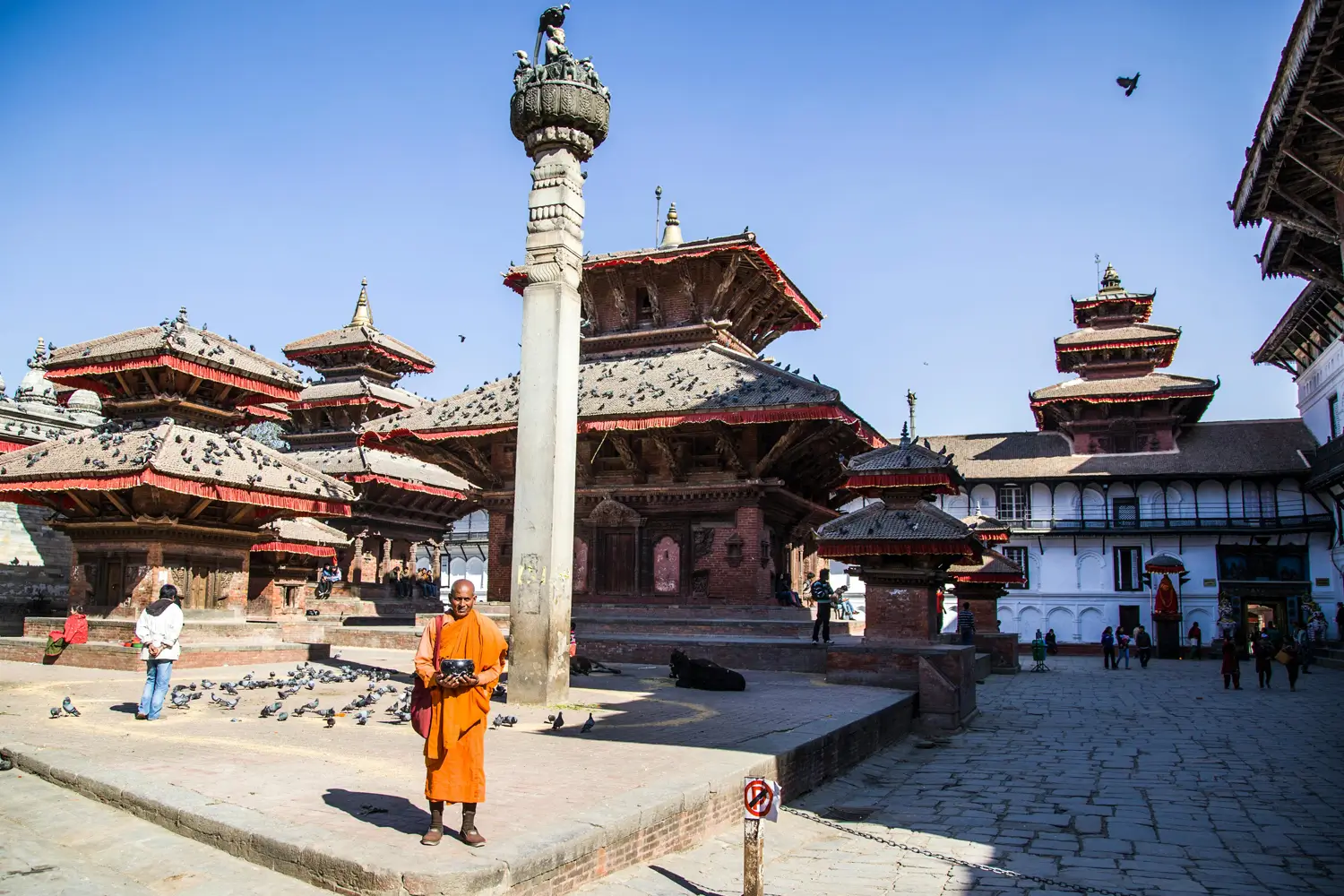
Kathmandu Durbar Square also known as Basantapur Durbar holds an important place in the history of Kathmandu which was home to the Malla Kings and later the Shah Dynasty. Comprising of different palaces, temples and courtyards, it remains as the evidence of Nepal’s rich cultural heritage showcasing the fineness of Newari Craftsmanship and architecture.
The Hanuman Dhoka Palace once served as the residence of the kings is now a Museum which showcases the Royal History of Nepal. It is home to historical artifacts, portraits and the belongings of the royal family. Nautalle Durbar in the premise was built by King Prithivi Narayan Shah to commemorate the Unification of Nepal.
The Kumari Ghar is where the Living Goddess Kumari lives. She is taken out during special festivals such as Indra Jatra. Visitors can catch a glimpse of Kumari through the window where she appears for short durations with solemn expression. The selection of Kumari is a tedious process ensuring that the chosen one is in perfect harmony with the divine. Once the Kumari reaches Puberty, a new Kumari is chosen.
A visit to the Durbar Square brings out an immersive experience in the Royal Past and the traditions of Nepal. With the variety it has to offer and having the home of the Living Goddess, it adds to the list of not to miss spots while in Kathmandu..
Entrance fees of Kathmandu Durbar Square- Top 10 Places to Visit in Kathmandu
Npr 1000 for Foreign Nationals and NPR 500 for SAARC Nationals.
Nepalese need to pay an entrance of NPR 50 to enter the museum and the tickets are available infront of the Gaddhi Baithak.
Bouddhanath Stupa

Bouddhanath Stupa, located in the Kathmandu Valley, is one of the largest and most significant Buddhist stupas in the world which is another top attraction in Kathmandu. The stupa's massive mandala structure, with its distinctive all-seeing eyes of Buddha, represents the universe and serves as a focal point for meditation and prayer. Pilgrims from around the globe circumambulate the stupa, engaging in rituals for peace, enlightenment, and blessings which is also believed to purify the souls mitigating them from their sins.
The Story of King Vikramjit and the Drought
The Bouddhanath Stupa is deeply linked to the story of King Vikramjit, a noble ruler. According to mythology, Kathmandu once faced a severe drought which lasted for several years. People were suffering hunger and thirst. The king was deeply concerned and he took consultation of some monks and sages to come to a solution.
The monks advised that the sacrifice of someone having 32 perfections (gunas) will please the gods to end the drought. Only the king and his sons were suitable candidates. The King chose to offer his life willingly, in his dedication to his people.
He asked his son to offer the sacrifice without looking at the person who will be there covering his face and body. After the sacrifice, the son realized he killed his own father and took consultation from the priests for the way to salvation. The priests suggested him to fly a hen. The hen landed in the place where the stupa stands now which was built by the prince in the honor of his father's sacrifice to ensure the protection of his kingdom.
What is the significance of the Two Deers and the Wheel of Law (Dharma Wheel) at Bouddhanath and Other Buddhist Monasteries?
The two deers (one male and other female) and the Wheel of Law (Dharmachakra) are significant symbols commonly found at Bouddhanath Stupa and other Buddhist monasteries, representing core principles of Buddhist teachings and the path toward enlightenment.
The male and female deer refers to the skillful means and wisdom required to achieve liberation. The two deer also symbolize the values of peace, harmony and happiness. The Dharma Wheel represents the teachings of Buddhism on how to attain enlightenment and eliminate human suffering
Entrance fees of Bouddhanath Stupa
NPR 400 for Foreign Nationals. NPR 100 SAARC Nationals
Budhanilkantha Temple

Another major attraction in Kathmandu Valley is the Budhanilkantha Temple is one of Nepal's most significant Hindu temples with its unique reclining statue of Lord Vishnu. It is located at the foot of the lush Shivapuri Hills, about 10 kilometers north of the capital. .
The center of attraction at the Budhanilkantha Temple is reclining statue of Lord Vishnu, which is carved from a single block of black stone. The statue which is 16 feet (five meters) in length showcases a peaceful position of lord Vishnu. Vishnu is a major deity of the Hindu trinity (Trimurti), who is the protector and preserver of universe.
The statue submerged in a small,holy pond, creates an illusion that Lord Vishnu is floating on the water. The pond itself is believed to be sacred with healing properties.
The Linkage Between the Water at Budhanilkantha Temple and Gosainkunda Lake
An interesting aspect of the temple is its connection with the high altitude sacred lake Gosainkunda Lake which lies in the Langtang National Park. It is believed that the source of the water of the pond in the temple is the Gosainkunda lake. Thus, the water at the temple has healing power.
The Legend of the Nepalese Monarchy
As per the legend, King Pratap Malla had a vision which claimed that the king was cursed. If he would visit Budhanilkantha Temple then they would die prematurely. He then believed that the kings of Nepal would die if they visited the Temple. Royal family members including the Nepalese monarchs after King Pratap Malla never visited the Temple with this fear.
Ason Bazzar and Indrachowk

Ason and Indrachowk are traditional markets in the Kathmandu Valley. These streets are a visual feast, with sounds, vibrant colors and smells that depict the hustle and bustle of valley residents' daily lives.
Ason also known as the Spice Market has small streets lined with vendors selling spices, textiles, and local products. It's an excellent place to feel the spirit of Kathmandu.
On the other hand, Indrachowk is well-known for the textile, golden jeweleries, bridal outfits and beads shops. There is also an alley with shops selling makeup products.
Both the markets have cultural significance reflecting the traditions of Kathmandu which make them not to miss destinations for anyone looking to experience the city to the fullest.
Narayanhiti Palace Museum

Narayanhiti Palace Museum, is a acclaimed historical site located in the heart of the capital city Kathmandu. The name is consisted of two words Vishnu (God) and Hiti (Water spout). It is situated near the famous tourist destination Thamel. The palace was constructed in 1963 during the reign of King Mahendra. It was designed by an American architect named Benjamin Polk. The palace expands in approximately about 37.8 hectares and has 52 rooms named after different districts of Nepal.
Narayanhiti palace became a symbol of Nepal's royalty, witnessing both glory and tragedy. It rose to national prominence following the devastating royal massacre on June 1, 2001, in which King Birendra, Queen Aishwarya, and several members of the royal family were brutally murdered. Following the tragic incident, Gyanendra, King Birendra's brother, took the throne.
The political situation in Nepal changed in the years after the tragedy. A sequence of revolutionary activities abolished Monarchy and the country became a republic. In June 11, 2008, King Gyanendra left the palace. The Narayanhiti Palace was then converted into a public museum commemorating the transition from monarchy to democracy.
Prime Minister Girija Prasad Koirala inaugurated the palace museum in 15 June 2008, while Prime Minister Pushpa Kamal Dahal (Prachanda) led the official public opening in 26 Febrary, 2009 . Today, the Narayanhiti Royal Palace Museum serves as a historical monument, displaying artifacts, furnishings, and mementos from Nepal's royal era while also telling the tale of the country's journey to republic status. It serves as a painful reminder of Nepal's political and cultural development.
Entrance Fee to Narayanhiti Palace Museum
NPR 1000 to foreign Nationals
NPR 500 (SAARC and Chinese Nationals)
NPR 200 (Nepalese)
NPR 50 (Nepalese Students)
Visiting Hours : 10:30 am to 2:30 pm (Thursday to Monday)
10:30 am to 1:30 pm(Tuesdayy)
Closed on Wednesday
Garden of Dreams

The Garden of Dreams depicting the Six Seasons of Nepal, is a magnificent neoclassical garden in the center of Kathmandu. The garden was constructed in 1920 by Field Marshal Kaiser Shumsher Rana and designed by Kishor Narsingh. It was created as a private getaway, with stunning pavilions, pergolas, fountains, and lush flora.
At Present, the Garden of Dreams provides a peaceful refuge from busy streets of Kathmandu. Its peaceful setting, offering groomed lawns, vivid flowerbeds, and intricate buildings, makes it a great place for the visitors to experience its attractiveness and enjoy a tranquil ambiance while sipping coffee or dining at the Kaiser Cafe.
The Garden of Dreams was neglected for many years. It was renovated with the help of the Austrian government and the Government of Nepal. It is today a wonderful monument that combines history, culture, and environment, attracting both locals and tourists looking for a escape from the city's chaos.
How much is the entrance fee for The Garden of Dreams ?
150 per person for Nepalese
Rs. 400 per person for All Foreign Nationals.
Children, specially abled and senior citizens are given a discount of 50%.

The Chandragiri Hills Cable Car ride of 2.5 kilometers takes you to an elevation of 2,551 meters in just 10 minutes. It provides breathtaking views of the Kathmandu Valley and the beautiful Himalayas. The cable car ride is an adventure in itself, with breathtaking views as you ascend to the mountaintop with distant views of Himalayan peaks including Mount Everest, Langtang, Ganesh Himal, and Annapurna.
At the top lies a scared Shaktipeeth Bhaleshwor Mahadev Temple dedicated to Lord Shiva. Bhala means forehead. According to Hindu mythology, this is where the forehead (Bhala) of Sati Devi, the first consort of Lord Shiva, fell as he carried her body in grief across the universe.
It is believed to be a place Where Wishes Come True, attracting countless devotees seeking blessings and fulfillment of their aspirations.
This site also holds great historical importance as the spot where King Prithvi Narayan Shah, the unifier of Nepal, plotted for the conquest of Kantipur (Kathmandu).
In addition to its spiritual importance, Chandragiri Hills has a number of modern attractions. Chandragiri Hills Resort, a beautiful four-star resort, offers premium rooms, great cuisine, and wellness facilities, allowing guests to unwind while taking in the breathtaking mountain views. Adventurers can participate in activities such as a thrilling zipline ride, a skywalk, free fall, or nature trails that goes through the beautiful forest. Picnic spots and children's playgrounds are among the family-friendly features. People preferring hiking can also trace the hiking trails to reach the top.
Chandragiri Hills is more than just a destination; it's a perfect blend of spirituality, history, natural beauty, and modern recreation. Whether you're looking for blessings, adventure, or breathtaking mountain views, this remarkable destination will provide an indelible experience.
Chandragiri Cable Car Ride Fee
Npr 825 Nepalese Citizens
NPR 1320 SAARC Nationals
USD 16 Chinese
USD 23 Foreign Nationals
Operating Hours:
Sunday – Thursday: 8:00 AM – 6:00 PM
Break Time: 12:00 PM – 1:00 PM
Friday – Saturday: 8:00 AM – 9:00 PM
Thamel
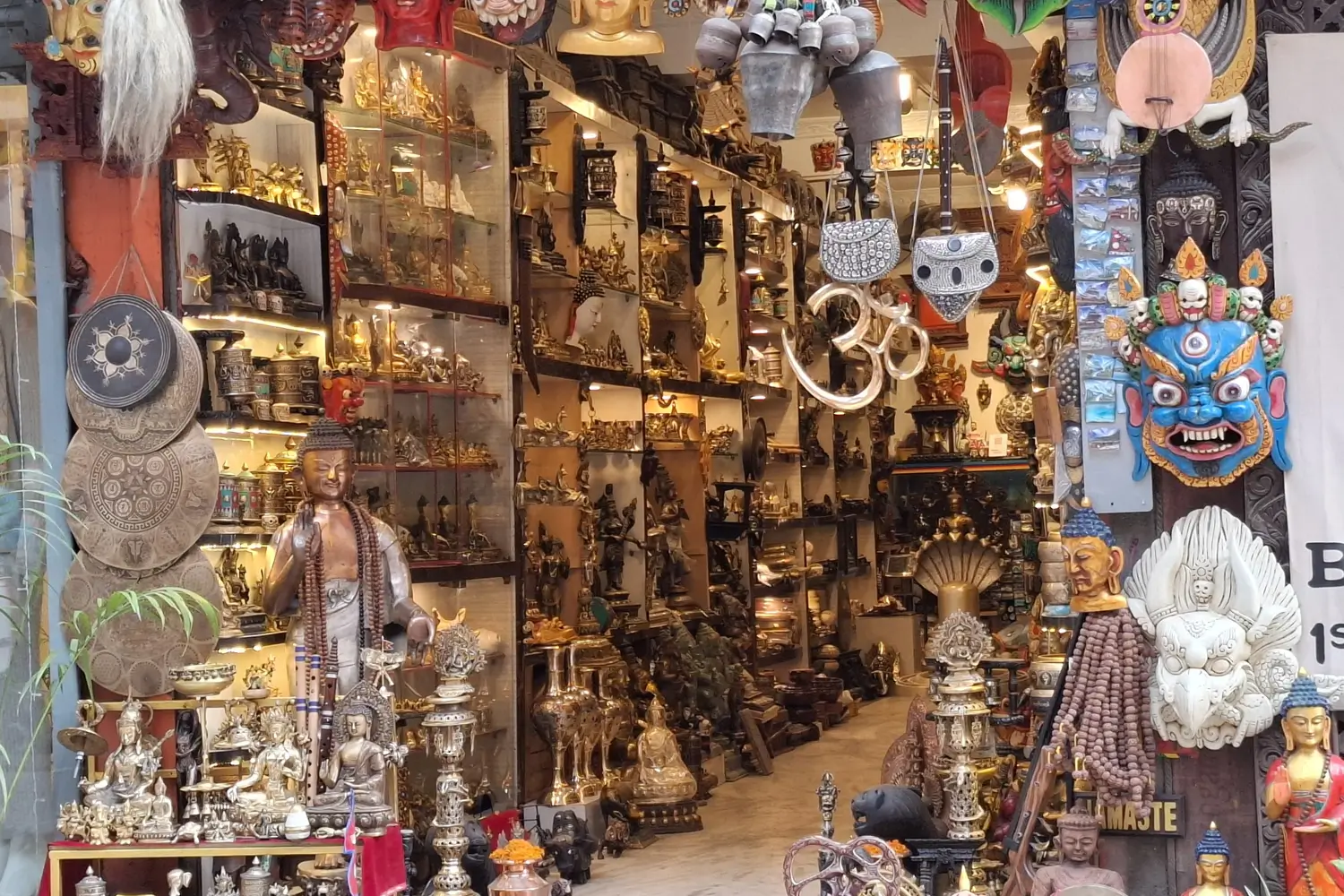
Thamel is Kathmandu's busiest neighborhood and tourism hub. It gets its name from the Newari term "Tha Bahi". Thamel has been the center for tourists over four decades which is now recognized as the bustling core of Kathmandu's tourism. We can find perfect blend of culture, commerce, and hospitality.
This vibrant zone is a haven for backpackers and adventurers and also serves as a center for vacation planning. Various businesses in Thamel specialize in trekking gear, selling everything from clothing and footwear to backpacks, sleeping bags, and hiking gear.
Thamel is also an excellent place to shop for souvenirs. Tourists can wander through its small lanes, which are packed with shops offering traditional Nepali handicrafts, Pashmina shawls, Thangka paintings, jewelry, Nepali Special tea, Tibetan Singing Bowls, Prayer flags, and unique cultural relics. The tourist hub provides an ideal balance of modern and classic shopping experiences.
Thamel has a wide range of restaurants that serve a variety of cuisines, including authentic Nepali and Tibetan meals, Indian, Chinese, Italian, Continental, and even Middle Eastern delicacies. Whether you crave for momo (dumplings), dal bhat (a Nepali staple), wood-fired pizza, or falafel, Thamel's diverse culinary scene has something for everyone. Of course there are places serving the Best Himalayan Coffee.
Thamel's accommodations offer to a wide range of guests, from inexpensive backpackers to those seeking luxury. Hotels range from low-cost hostels and homestays to boutique stays and high-end options with modern amenities. Thamel's hospitality is known for its warmth and inviting nature, offering a comfortable stay.
Additionally, Thamel provides a distinct cultural and nightlife experience. Whether you're planning your next trekking trip, indulging in Nepalese and foreign cuisines, or simply taking in the vibrant environment, Thamel is the pulsing center of Kathmandu's tourism industry, providing something memorable for every visitor.
Conclusion
The Capital city of Nepal, Kathmandu has something special for everyone. From the ancient temples of Pashupatinath and Swayambhunath to the peacefulness of Garden of Dreams, from the colorful streets of Thamel to the cable car ride at Chandragiri hills, each of these top 10 places has its own story to dictate. The city provides an unforgettable journey through the spirituality, history and culture.
Also refer to our blog Top 10 Places to Visit in Nepal to uncover the gems of the Himalayan Country
Frequently Asked Questions(FAQs)
• Why should you hire a guide for visiting Kathmandu?
A tour guide can explain about the history, tales and significance of the places and also take you to the lesser known offbeat locations with secret alleys.
• Is Kathmandu safe for solo travelers?
Yes, Kathmandu is generally safe for solo travelers. The locals are friendly and hospitable. However, you can follow some tips: Avoid walking in low lit areas at night, taking care of your belongings in crowded places and staying in good accommodations having trusted reviews.
• Is Kathmandu a good destination to travel with family?
Absolutely yes! Kathmandu offers family friendly attractions. The city offers a mixture of adventure and culture making it a perfect destination for families.












.webp)
